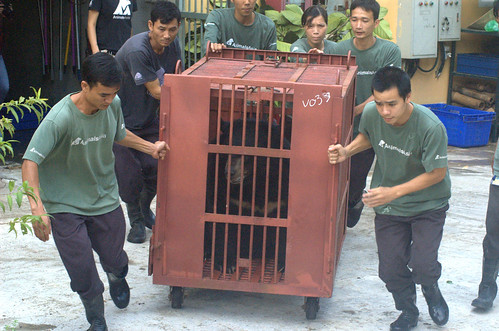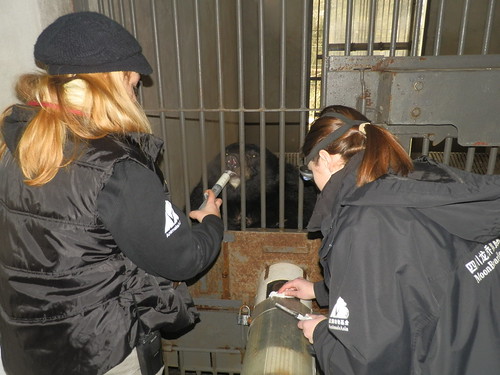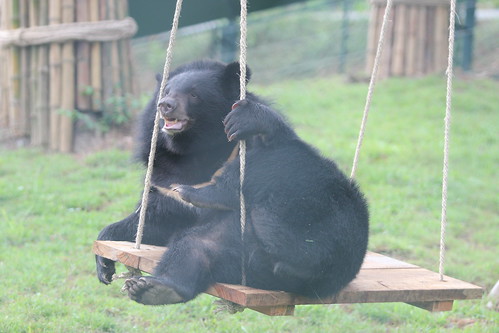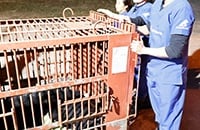What these rescued bears will do for their carers will blow your mind
06 November 2015
They spent decades in tiny cages on bear bile farms before they were rescued – now these bears trust their carers so much, they’ll willingly step back into a cage.
It’s a step based on pure trust – the ultimate demonstration that despite being abused by humans for so much of their lives, the bears have learnt not everyone is cruel.
After bears have been rescued, Animals Asia ensures that they are weighed every three months as part of their ongoing care. For that, their carers need them to step into a cage. It’s a move they learn to make willingly.
China Bear and Vet Team Director Nic Field said:
“In order for us to manage the bears we rescue we need to develop trust with them. Another good example of this is that the bears learn that a bell ringing means it’s either time to go outside for breakfast, or it’s time to come in for the evening.
“Similarly, in order for the bears to be health checked every three years, they have been conditioned to enter our transportation cages so that they can be transferred to the veterinary hospital with minimal stress. When you consider what they have been through, it is incredible that they can learn to trust like this again.”
All bears rescued by Animals Asia are traumatised.
The cubs who are learning to take their first steps in Animals Asia’s care have, for the most part, been orphaned by poachers – who most likely killed their mothers.
The older bears are recovering from years and sometimes decades trapped in cages, where they faced regular bile extractions through open wounds. The bile is then used for traditional medicine.
Their new carers would never hurt them. But the bears don’t know that. It takes an incredible effort on the part of Animals Asia’s bear workers – and an incredible leap of faith from the bears.
When Animals Asia’s work with bears began, there were few in the world providing such large-scale care for rescued moon and sun bears. In the years since, the bear and vet teams have developed a programme designed to address all the bears’ needs – physically, behaviourally and psychologically.
At the heart of building up trust and conditioning the bears is the positive reinforcement that goes into getting our bears to feel comfortable in their new homes, and into creating an atmosphere of trust and relaxation at our sanctuaries.
One older bear who has problems wearing down his claws has even been conditioned to receive a manicure – while another bear with renal disease has been trained for conscious blood draw.
Nic continued:
“This training or conditioning of the bears also illustrates their enormous capacity for forgiveness. Furthermore, it also shows the beautiful bond and trust many of them have developed with the team that care for them.”
BACK







 5 reasons the dog meat trade must end
5 reasons the dog meat trade must end
 New year, new home for Christmas the Bear!
New year, new home for Christmas the Bear!
 Veterinary welfare training – pain management
Veterinary welfare training – pain management